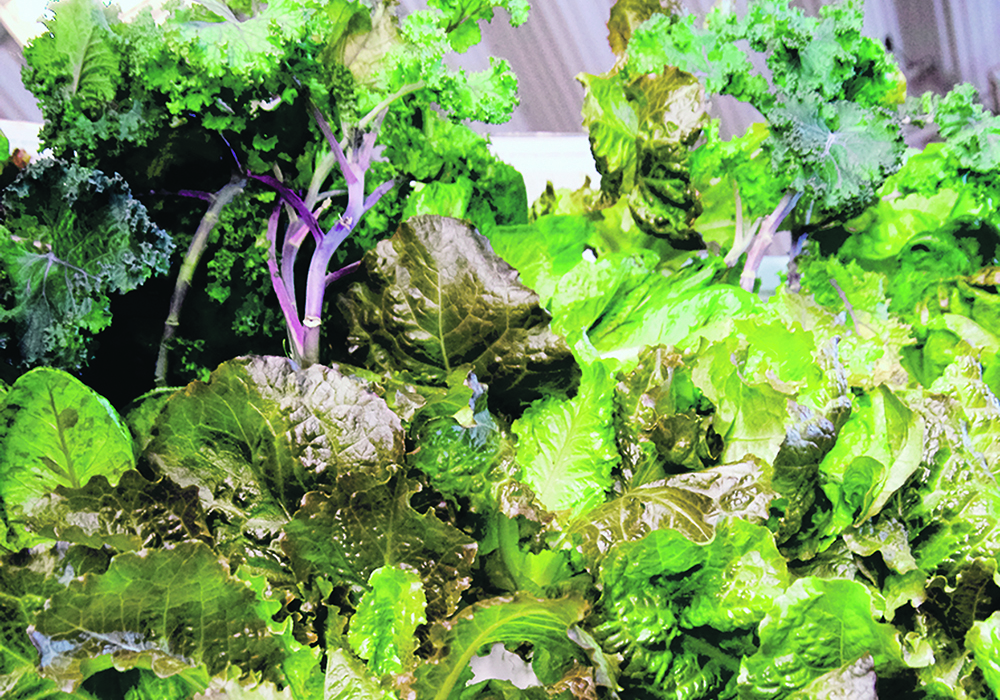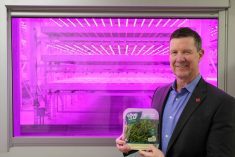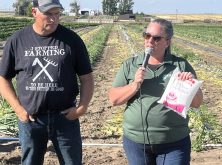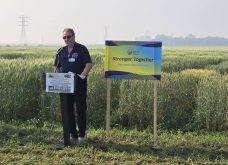Glacier FarmMedia – Trina Semenchuk wants to make Manitoba the vertical farming capital of the world.
“It’s a very bold vision, but yeah, it’s my vision,” she said. “Why not? We have a short growing season and we have so much talent here. We have quite a lot of resources already available in Winnipeg.”
Semenchuk started her company, The Little Greenhouse That Could, to help facilitate her vision.
Despite the name, the company has no physical greenhouse. As a consultancy for those interested in setting up vertical farming operations, the crop she grows is future farmers and farm business. Her goal is to establish a cluster of people who have bought into the business model in Manitoba.
Read Also
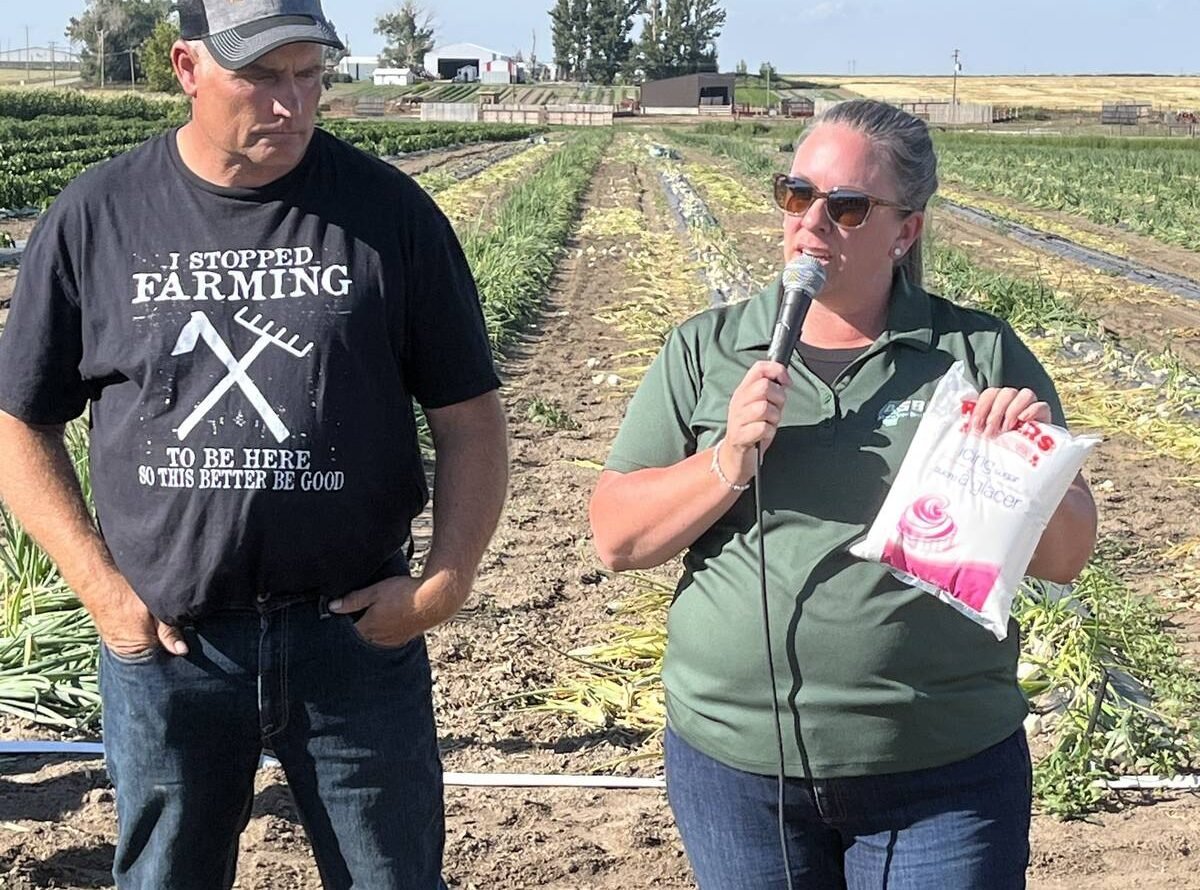
Alberta’s beets a sweet domestic segment in Canada’s sugar supply
The sugar beet industry is showcased during a Farm to Table tour, as Taber features the last remaining sugar beet processing plant in all of Canada.
“I genuinely think that if enough people got on board, we could definitely make it a vertical farming capital,” said Semenchuk.
“But we might not. I’m OK with making a bold vision that doesn’t come true because, at the end of the day, it’s not up to me if Manitoba becomes this capital. It’s going to be based on whether we get enough community buy-in. My company alone would not be able to do that.”
The idea took root during the pandemic. Semenchuk had previously been interested in sustainable development and the adoption of new technology in the face of climate change, and the pandemic heightened her concern around food security.
At the time, she was working as an environmental engineer but was looking to make a change.
“I was walking around one day and I just kept thinking, ‘I wish that there were greenhouses everywhere.’ So I decided to just quit my job and start up a greenhouse business,” said Semenchuk.
“I didn’t really know anything about greenhouses or vertical farms, but I was just like, ‘OK, I’m just going to learn, and I’m just going to do this.’”
To build her knowledge of vertical farming, she went back to school for her masters degree at the University of Manitoba. Her thesis topic looked to validate an energy model focused specifically on vertical farming, and her studies included the design, construction and operation of a working vertical farm on the university campus.
“That’s where my research work comes from,” said Semenchuk.
Operating under the department of biosystems engineering, the farm in the university’s Sustainability in Action Facility is housed in an enclosed structure with no natural light. Plants are stacked vertically, with photosynthesis facilitated through LED lighting rather than sunlight.
“We’re focused on leafy greens right now at the U of M, but that’s just because we’re just getting the first farm started,” Semenchuk said. “It’s easier to validate that your systems are working correctly with leafy greens because they have a faster growth rate.”
The university is also pursuing a second hydroponic system that will feature larger plants like tomatoes and peppers. Eventually, they hope to expand to other crops and berries.
Semenchuk brought her message to Government House at the Manitoba Legislative grounds on April 9 during a special speaking event.
“The event was great,” she said. “I really enjoy talking about the work that I’m doing in research, community work and the projects that we’re doing through Little Greenhouse. It was really great to engage with the community, especially on the research side of things. It was an opportunity to share what kind of research is happening at the U of M.”
One project involves collaboration with Siloam Mission to establish a small, vertical farming operation.
“They can use the wall to grow produce for people in their shelter and they can sell extra produce to their volunteers,” she said, adding that the project could also impart useful skills for those using Siloam Mission’s services.
“They can train people who are using their shelter to become vertical farmers.”
A number of vertical farming operations have already established in Manitoba. Harvest Today is a U.S.-based company with a facility near Winnipeg, where it grows produce under “vertigation”— walls of plants grown under artificial light in peat cups, fed by a vertical system of water and nutrition.
However, the company’s main business is selling modular vertical farming systems. It has gained an international customer base, including communities in remote areas that could benefit from locally grown produce options.
The company took its system to the Innovations Showcase of Manitoba Ag Days last year. Like the farm at the U of M, it was focused on leafy greens but had plans to expand into other produce.
Plans have also been announced to retrofit Brandon’s McKenzie Seeds building into a massive vertical farming operation under the auspices of Brandon Fresh Farms.
The business model for vertical farming does face challenges. There is an expanding bubble of entrants into the sector globally but bubbles tend to pop when faced with the realities of making the concept profitable.
Many early (and now failed) vertical farming operations “were started by people who had no agricultural background whatsoever,” Thomas Graham, University of Guelph assistant professor and PhytoGro research chair in controlled environment systems, told Glacier Media last year as part of an analysis on the rise of vertical farming in Canada.
“They loved the idea, they were sold on it, and they threw a bunch of money at it. That was one issue.”
Advances in indoor lighting have made vertical farming more feasible, he noted at the time, but energy consumption remains a wrinkle.
“The vertical farming sector right now is at a point where leafy greens, baby greens, microgreens, etcetera, are all certainly economically feasible right now, and a good number of the farms are actually finally making money with those crops,” he said. “But you’re never going to feed the world on lettuce.”
Semenchuk plans to continue outreach efforts and set up more vertical farm projects.
“I’m taking steps towards getting more projects and getting more vertical farming initiatives happening in Winnipeg, which will help achieve that vision,” she said.
Her immediate goal is to grow her brand awareness and undertake community engagement initiatives like the April 9 speaking event.
“The more people know and are educated about the benefits of local food production, the more support we’ll get for getting small-scale projects going and the more support we’ll get for research into vertical farming,” said Semenchuk. “It’s kind of like a snowball.”


